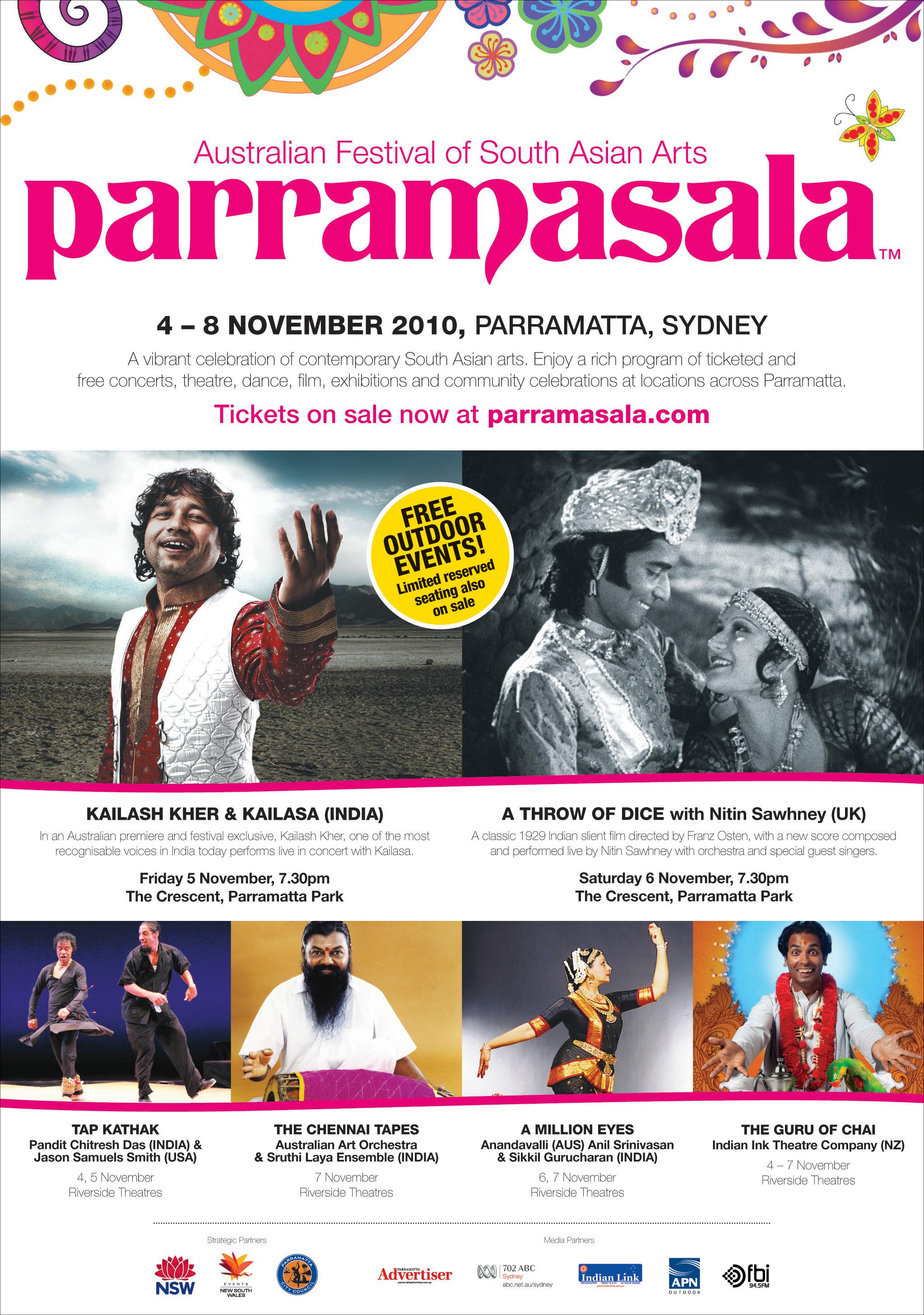
2 minute read
Unlikely jodi makes a hit show
from 2010-11 Sydney (2)
by Indian Link
In celebration of Parramasala, the heart of Parramatta teemed with the sights, sounds and smells of India as the neighbourhood was transformed into a vibrant centre for the South Asian arts. On November 4 and 5 the Riverside theatre became the home for an unlikely collaboration between two very different artists: the first, a 65-year-old American-based, Kolkata-born kathak dancer, and the other, a New York-based tap dancer, less than half the age of the first.
“Tap Kathak” opened the inaugural festival with a spellbinding performance between these two great artists. For any of us with doubts about the mixing of such different art forms and artists from different generations and cultural backgrounds, such uncertainty was instantly dispelled the moment these two performers met on the stage. It was magic!
The performance began with Emmy Award-winning tapper Jason Samuel Smiths taking to the stage with a jazz trio of piano, drums and bass. All clad in black, with gleaming white tap shoes and a white tie to match, Samuel Smiths astounded the crowd with what were, no doubt, some of the fastest feet in rhythm. His individual style of American tap and the improvised exchanges with his jazz trio impressed, warming up the stage. Samuel-Smith’s own charismatic personality, his interactions with the audience including an impromptu rap, enticed his viewers into a sensational journey of rhythm.
Samuel-Smiths’ performance was followed by Das’s solo presentation of traditional kathak, albeit a shortened version. Beginning his dance with the powerful Shiva Vandana, Das paid respect to the deities of Shiva and Parvati, transforming the stage into a space of both, devotion and masterful performance. Sitting in the audience, one could see fans of the Indian arts carefully marking the tal (time cycle), and throwing their arms up in the air with Das’s brilliant renditions of traditional bols (compositions). In his thaat, stunning flourishes of footwork were juxtaposed with surprising instances of stillness, so characteristic of kathak, creating delight for even the most unknowing within the audience. And this was perhaps one of the highlights in Das’s performance: despite one’s pre-conceived ideas of kathak, or their lack of familiarity with the art, he was able to communicate its power and beauty through a compelling performance. Das easily made the language of the art palpable for all of the audience, despite their diverse backgrounds.
Das’s interpretation of the story of Shankutula and Dushanta was most exemplary of this skill, to translate and make the stories of Indian culture relevant to all. He fluidly moved between his explanation, delivered specifically for this Australian audience unfamiliar with the narrative, and a masterful portrayal of both male and female characters using his body, hand gestures, facial expression and the sounds of his feet. For those seated close enough, the subtle nuances of facial expression, evocative eyes and agile eyebrows added to the layers of the story.
Amidst whispers behind me, “I can’t believe he’s 65!” Das continued on with a crowd-pleasing rendition of “the train”, an imitation of the sounds of a train on its voyage, created exclusively through the sounds of his feet and ghungroo (ankle bells).
Asking permission from the audience, Das humbly proceeded to present his newest technique, kathak yoga, an almost unhuman-like feat of self-accompaniment and polyrhythmic play. This dance-exercise form inspired by the great sadhus of India requires the artist to dance, sing and play the tabla in different rhythms.

And then finally, after much anticipation, Samuel-Smiths returned to meet Das on the stage. When they finally danced together, it was exhilarating experience that left us all breathless.
The ensuing sawal jabab (call and response) was a delightful exchange of rhythms between the musicians and each artist. Samuels-Smith listened intently to the Indian musicians, waiting for the rhythmic challenge. Tabla player Abhijit Bannerjee delivered furious tabla rhythms, and Samuels-Smiths responded, throwing it right back, in tap style, giving these accomplished








